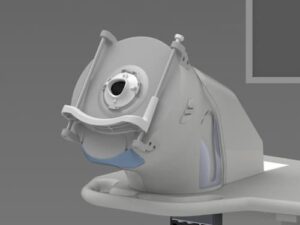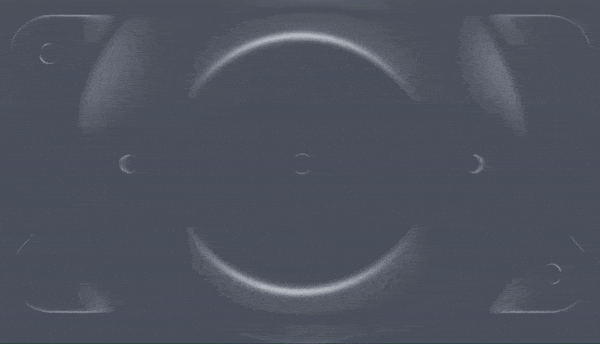Are you interested in a vision correction procedure that provides visual freedom? Here at IQ Laser Vision, we offer many of these procedures, but one way we set ourselves apart during EVO ICL surgery is with the ArcScan Insight 100 device.
Keep reading to discover why using ArcScan sets EVO ICL procedures apart and means better outcomes for your vision!
What is ArcScan?

ArcScan refers to a device called the ArcScan Insight 100 that provides highly advanced imaging and scanning of your eyes. IQ Laser Vision is one of only a few vision centers in the country to own one of these devices.
Using ArcScan, we gain the utmost information available on your eyes and vision. The ArcScan Insight 100 is an ultrasound device that uses high-frequency ultrasound technology.
The ultrasound device is incredibly easy to use for ophthalmologists. It also provides unmatched repeatability and accuracy.
Its accuracy extends to imaging, insights into the eye’s anatomy, and measurements it provides. With the ArcScan Insight 100, ophthalmologists at IQ Laser Vision have unequivocal access to the areas behind the iris.
Here at IQ Laser Vision, we have been thrilled with the life-changing results, the increased safety, and the convenience of the EVO ICL. Dr. Lin started performing icl procedures in 2008.
Since the approval of the EVO ICL about four months ago, we have already completed the icl surgery on over 200 eyes. Using the ArcScan Insight 100 device has brought unmatched precision because we can accurately measure the sulcus and place the optimal lens size.
For the EVO ICL, the sulcus in question is the ciliary sulcus. The ciliary sulcus is a small space between the posterior surface of the base of the iris and the anterior surface of the ciliary body. ArcScan’s Capsule Imaging Mode can measure the ciliary sulcus to help determine the optimal lens size for individual patient needs.
The ArcScan device and software work together to create a powerful platform. Using ArcScan allows us to observe high-resolution images of the eye in micron precision.
This includes the entire anterior segment of the eye. The anterior segment is between the iris and the cornea at the front of the eye.
Before ArcScan Insight 100, no optical technologies were available to image these areas. Providing the ability to view the anterior segment of the eye with crystal-clear precision puts the ArcScan Insight 100 Device into a class of its own.
How Does ArcScan Work?
The ArcScan Insight 100 device is a precision high-frequency ultrasound device used for imaging and measuring the biometry of the eye. Biometry measures the power of the cornea, called keratometry, and the length of the eye.
With this information and data, a surgeon can determine a patient’s ideal intraocular lens power before undergoing implantation of an intraocular lens during cataract surgery. Failing to perform this calculation, or executing it inaccurately, may leave a patient with a significant refractive error.
However, biometrics is also a critical component used to calculate the size and necessary placement of an EVO ICL in a patient for the best possible outcomes. Before ArcScan technology, ultrasound imaging had not seen updates and developments in decades. The ArcScan Insight 100 device uses Swept Beam Liquid Interface technology.
The Swept Beam Liquid Interface is a core proprietary technology that uses a mechanically controlled 50 MHz transducer. The transducer scans the eye using an arc-shaped motion. While making this arc-shaped motion, the transducer’s curvature approximates the eye’s front surface.
Patients stay comfortable while looking through the center of the EyeSeal Disposable while keeping still and not moving their heads. EyeSeal Disposable is a crucial component in preventing cross-contamination between patients.
The ArcScan Insight 100 system has four main components:
- The ArcScan Insight 100 Device
- The Insight software package
- The fluidics module
- The electronics unit
These main components are crucial to how the ArcScan Insight 100 device works and helps patients.
How Does Using ArcScan Affect EVO ICL Procedures?
Although there are numerous benefits to using ArcScan, it can be highly conducive during EVO ICL procedures. In particular, it provides precision imaging behind the iris.
Having precision imaging behind the iris means better ICL and IOL sizing. The ArcScan Insight 100 is not a handheld device, yet it has many of the same components found in modern optical imaging software systems.

Patients only sit in front of the ArcScan Insight 100 for a few minutes. But during those few minutes, your ophthalmologist at IQ Laser Vision is provided with images of 1-micron resolution of the anterior segment of your eye.
They can see from the cornea to the posterior of your lens. These images are crystal-clear and provide a road map that your surgeon can follow during the implantation of the EVO Visian ICL.
Your ophthalmologist can also take measurements of the anatomic structures found in the anterior of the eye. These are often in harder-to-see and view places, but they can see these structures, like anterior chamber depth, angle-to-angle width, and behind the iris, among others.
They can also observe any solid masses and cysts which may not come up in other imaging and may affect your EVO ICL candidacy. The more information your eye doctor can gather, the more accurate their understanding of your eye and its workings will be.
Using ArcScan During EVO ICL Procedures

During your EVO ICL procedure, the ArcScan Insight 100 device can evaluate accurate lens position, tilt, and volume. The ArcScan Insight 100 provides an unmatched ability to measure the entire anterior chamber of the eye with ultrasound.
A common practice when sizing implantable collamer lenses is to use white-to-white measurements. White-to-white measurements refer to the measurement of the distance between the corneal limbus.
The limbus is where the transparent cornea meets the white sclera. However, using white-to-white measurements to size ICL and predict the sulcus is often inaccurate in at least 25% of eyes.
In these eyes, an error of >0.5mm can still occur, affecting vision. Using the ArcScan Insight 100 device applies a known and recognized nomogram to ensure precise scanning and measurements that help determine more accurate lens sizing for EVO ICL patients.
The ArcScan Insight 100 device can also calculate biometry before your EVO ICL procedure as well as after the procedure to ensure the most accurate placement and optimal visual results. Using ArcScan Insight 100 delivers the most advanced method available for EVO ICL sizing by providing the ability to measure the area inside the eye behind the iris where the additive lens will sit.
Only ultrasound imaging and the ArcScan Insight 100 device’s measuring calipers can create the precision necessary to accurately place the ICL in the exact position behind the iris. Patients undergoing the EVO ICL procedure at IQ Laser Vision can feel confident knowing their vision is in the best possible hands.
Investing in state-of-the-art technology like the ArcScan Insight 100 device is one of the many ways IQ Laser Vision proves our dedication to our patients daily. Are you ready to find out if you’re a good candidate for the EVO ICL?
Schedule a consultation at IQ Laser Vision at one of our convenient locations in Los Angeles, San Francisco, Houston, and the surrounding California area! Isn’t it time to see the world without boundaries to hold you back?























